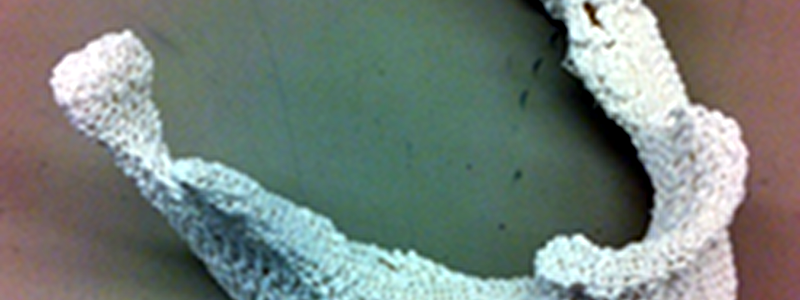What do you print with your 3D printer? Key chains? More printer parts (our favorite)? Enclosures for PC boards? At Johns Hopkins, they want to print bones. Not Halloween skeletons, either. Actual bones for use in bodies.
According to Johns Hopkins, over 200,000 people a year need head or face bone replacements due to birth defects, trauma, or surgery. Traditionally, surgeons cut part of your leg bone that doesn’t bear much weight out and shape it to meet the patient’s need. However, this has a few problems. The cut in the leg isn’t pleasant. In addition, it is difficult to create subtle curved shapes for a face out of a relatively straight leg bone.
This is an obvious application for 3D printing if you could find a suitable material to produce faux bones. The FDA allows polycaprolactate (PCL) plastic for other clinical uses and it is attractive because it has a relatively low melting point. That’s important because mixing in biological additives is difficult to do at high temperatures.
Additives are important because a bone graft isn’t just a mechanical part. The plastic graft has to allow for live bone cells to attach to the new part. Researchers found that adding some powdered cow bone into the plastic made the resulting graft much more effective.
The tests were conducted on mice and determined the properties of bone grafts made with different percentages of bone power. Future grafts will likely use human bone powder, which is already used clinically in other situations.
We’ve seen soft tissue printed before. You can even print some bio material with an old inkjet.















I have read of work printing acual organs. I wonder how long it will take to get around to printing complete people.Dr. Frankenstein would be interested.
Nah, he enjoyed sewing and jigsaw puzzles. Otherwise he would make his monster from two pieces (slightly used corpse and slightly used brain) instead of twenty…
If you’re digging up corpses in the middle of the night you probably won’t get many good whole bodies.
I have heard of printing a titanium jaw bone before
http://i.dailymail.co.uk/i/pix/2014/09/11/article-2751414-214195AD00000578-287_634x419.jpg
According to a urology specialist I know, the printed and matrix grown organs don’t have a great lifespan in body. The first ex vivo grown bladders survived implantation, but did not behave like normal tissue for as long as hoped. Even bladders made from stomach with an expected mean fail time of 5 to 8 years were much better.
Polycaprolactate – that’s a fancy word for “friendly plastic”, yes?
Also Polymorph, Shapelock, ReMoldables, Plastdude or TechTack.
Put it in boiling water and it softens right up. Glass transition temperature 60C, and you can get it online.
It’s also biodegradable within the body, so use it as a scaffold for bone cells that regrow as the plastic is degraded in the body.
I believe you meant polycaprolactone (which I confirmed is used in the linked article).
I saw a TV show where a woman had cancer removed from her pelvis. They used a “plug cutter” to remove a circular plug of bone around the tumor(s). To fill these holes, they used (cleaned and sterilized) coral cut into matching plugs. The idea was that the surrounding bone would grow into the voids in the plugs and absorb the calcium from the coral.
Could they not put coral into a CNC mill and make jawbones, etc.? Maybe it would have to be seeded with the patient’s own bone cells, since there might not be a nearby bone to grow into it, but this could possibly even be done outside the body in some kind of incubator, like they do with skin grafts.
I think coral would be more expensive than bone laced plastic, and also coral is getting endangered around the world (so they say) so this technique, if it works, is probably preferable.
Coral is renewably grown in special gardens around the world and can be fairly cheap.
Just the thought of this is exciting! Our 3d printing company may have the opportunity to get a printer that has the ability to do this in the near future, though it seems the material may be behind in terms of technology. It won’t be long before more money and grants are put into this!